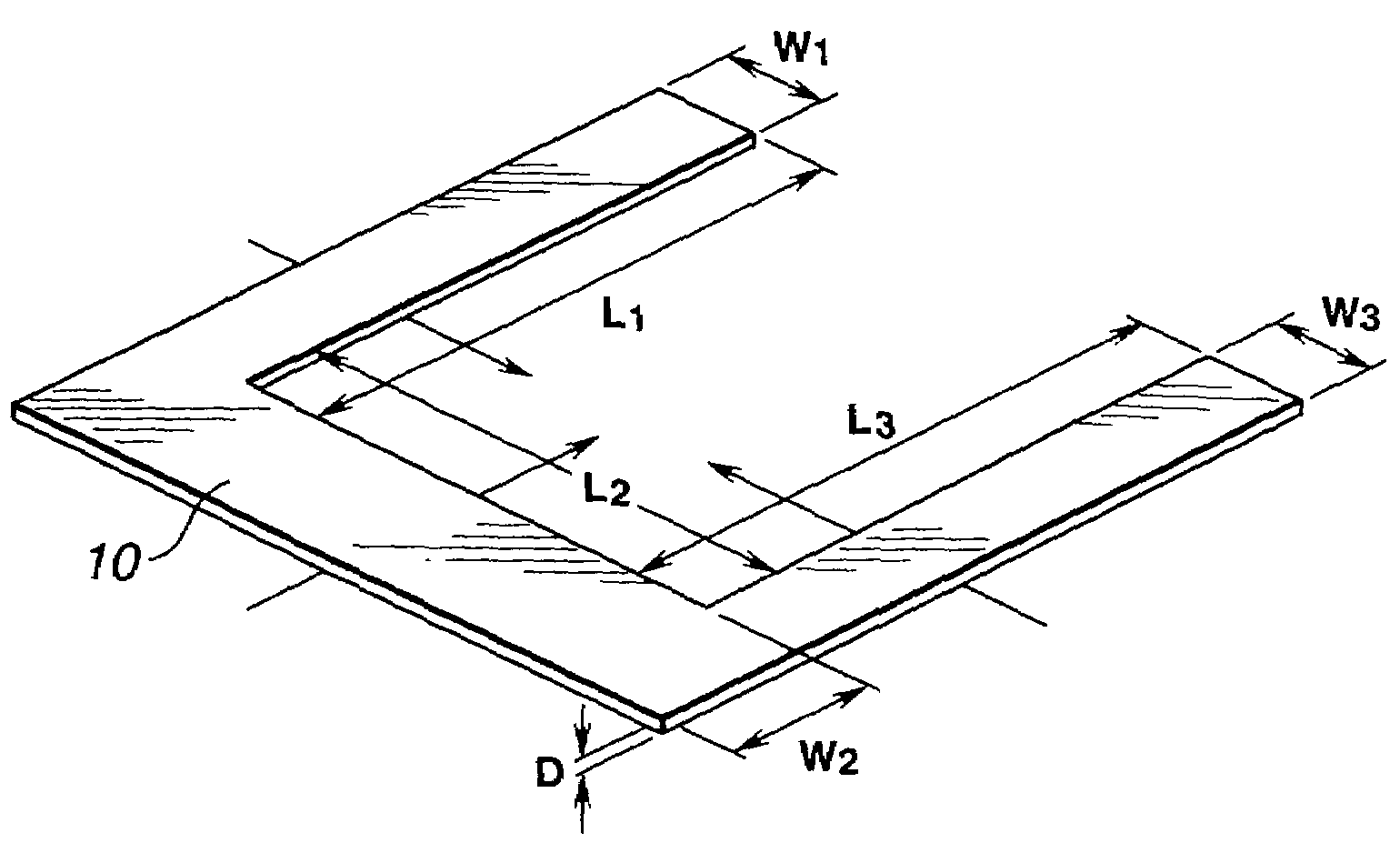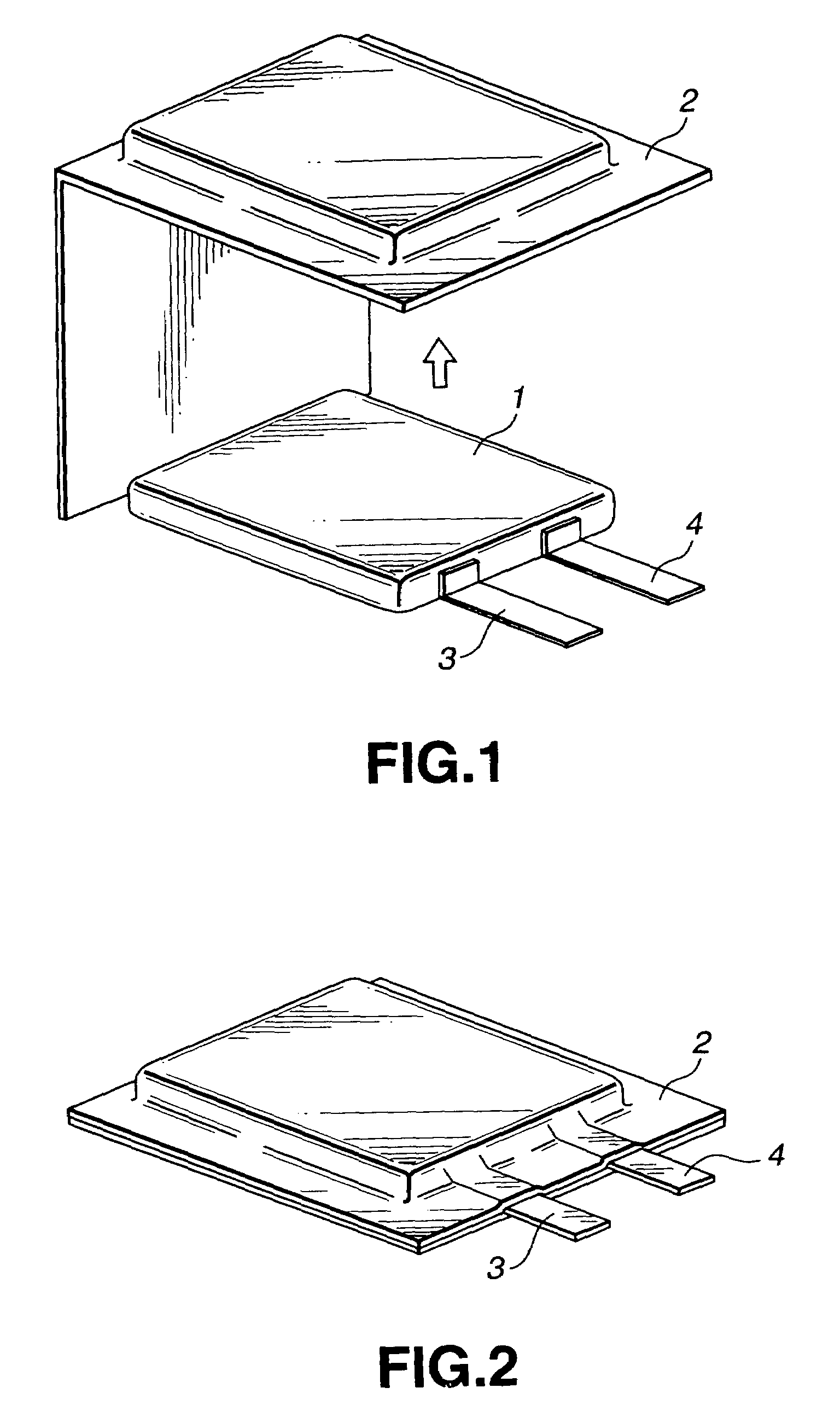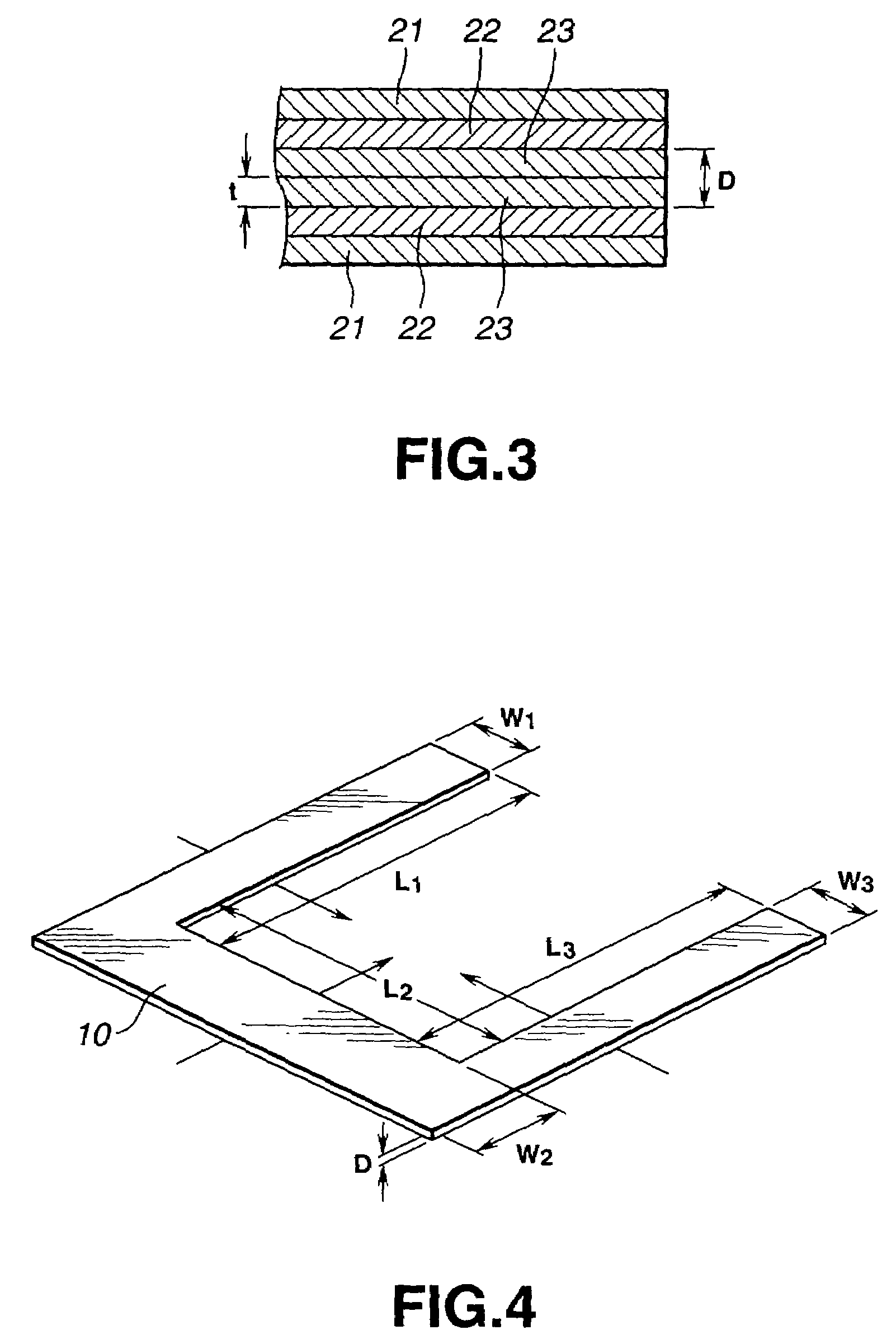Nonaqueous-electrolyte secondary battery
a secondary battery and non-aqueous electrolyte technology, applied in the field of non-aqueous electrolyte battery, can solve the problems of excessive battery capacity reduction and leakage of liquid, and achieve the effect of preventing the capacity reduction of the battery
- Summary
- Abstract
- Description
- Claims
- Application Information
AI Technical Summary
Benefits of technology
Problems solved by technology
Method used
Image
Examples
example 1
[0044]The negative electrode was manufactured as follows.
[0045]Ninety parts by weight of graphite powder obtained by pulverization and 10 parts by weight of poly (vinylidene fluoride-co-hexafloropropylene) serving as a binder were mixed so that a negative-electrode mix was prepared. Then, the negative-electrode mix was dispersed in N-methyl-2-pyrrolidone so as to be slurried. The slurry was uniformly applied to either side of elongated copper foil having a thickness of 10 μm and serving as a collector for the negative electrode. Then, the applied side was dried, and then the structure was compressed and molded by a roll pressing machine. Then, a 52 mm×320 mm portion was obtained by cutting.
[0046]On the other hand, the positive electrode was manufactured as follows.
[0047]To obtain the positive-electrode active material (LiCoO2), lithium carbonate and cobalt carbonate were mixed at a molar ratio 0.5:1. Then, the mixture was baked at 900° C. in the air for 5 hours. Then, 91 parts by we...
example 2
[0054]A battery was manufactured similarly to Example 1 except for the conditions according to Example 1 which were changed such that the thickness of the high-density polyethylene was 40 μm and the sealing process was performed such that the distance D between the metal foil members which was 70 μm. Then, the manufactured battery was evaluated.
example 3
[0055]A battery was manufactured similarly to Example 1 except for the conditions according to Example 1 which were changed such that the thickness of the high-density polyethylene was 15 μm and the sealing process was performed such that the distance D between the metal foil members which was 20 μm. Then, the manufactured battery was evaluated.
PUM
| Property | Measurement | Unit |
|---|---|---|
| width | aaaaa | aaaaa |
| thickness | aaaaa | aaaaa |
| thickness | aaaaa | aaaaa |
Abstract
Description
Claims
Application Information
 Login to View More
Login to View More - R&D
- Intellectual Property
- Life Sciences
- Materials
- Tech Scout
- Unparalleled Data Quality
- Higher Quality Content
- 60% Fewer Hallucinations
Browse by: Latest US Patents, China's latest patents, Technical Efficacy Thesaurus, Application Domain, Technology Topic, Popular Technical Reports.
© 2025 PatSnap. All rights reserved.Legal|Privacy policy|Modern Slavery Act Transparency Statement|Sitemap|About US| Contact US: help@patsnap.com



